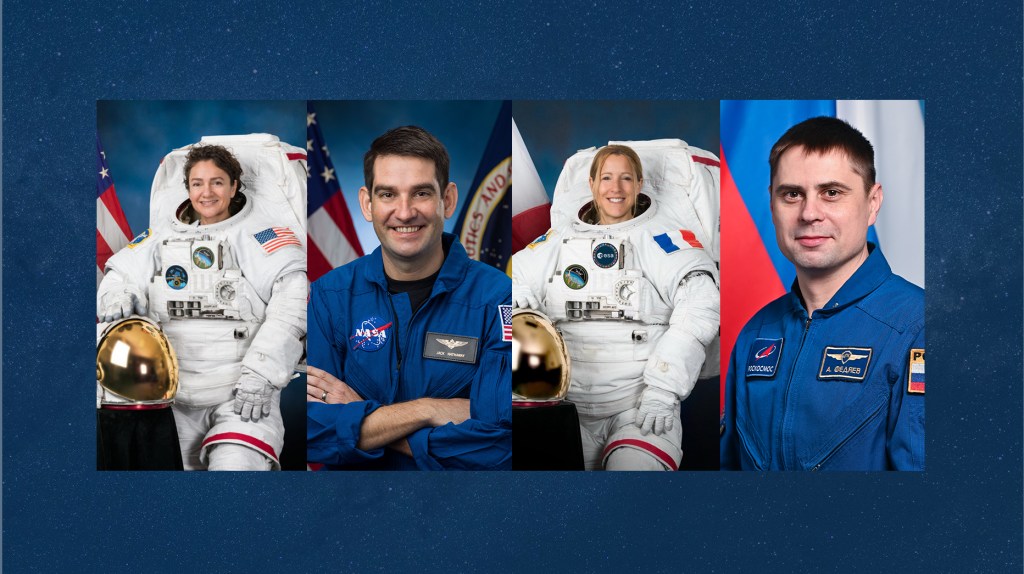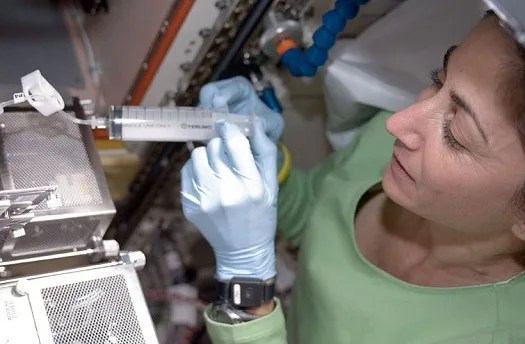Cell & Molecular Biology Program
Experiments
Cell and Molecular Space Biology Researchers conduct experiments that help develop an understanding of the ways cells (or parts of cells) function and respond to spaceflight. Our studies examine DNA function and structure, cellular and molecular changes, phenotypic changes to organisms, as well as the ability of eukaryotic cells to generate and maintain their complex internal cyto-architecture integral to the regulation of both growth and form.
The Importance of Gravity on Growth and Tissue Regeneration
On earth, organisms are continually subjected to the force of gravity throughout their lives. The influence of gravity on the human body is especially evident when looking at the effects space travel on bone loss and muscle tissue atrophy. Just how critically important a role gravity plays in the development and regeneration of living tissues is a mystery that NASA is continuing to investigate in order to determine if humans, animals, and plants can safely live in space for long periods of time. Getting to the source of what causes the gradual breakdown of tissues will be key in developing interventions to prevent space tissue loss on future long duration missions.
In a study funded by a NASA Space Biology grant researchers sent cultures of mouse embryonic stem cells into low earth orbit for 15 days on the STS-131 mission to follow the progress of stem cell differentiation, both while in space and then in culture back in normal gravity on earth. Embryonic stem cells can differentiate into all the specialized cells needed to grow a whole organism but are also responsible for maintaining the normal turnover of regenerative organs, such as blood, skin, or intestinal tissues. What they found in this series of experiments is that mechanical unloading of embryonic stem cells in microgravity inhibits their differentiation and preserves their “stemness”; the essential characteristic of a stem cell that distinguishes it from ordinary cells. These results may provide important clues to the basis for the inhibition of tissue regeneration in space and explain why bone and muscle cell numbers are reduced after long exposures to microgravity.
Blaber EA, Finkelstein H, Dvorochkin N, Sato KY, Yousuf R, Burns BP, Globus RK, Almeida E. Microgravity Reduces the Differentiation and Regenerative Potential of Embryonic Stem Cells. Stem Cells Dev. 2015 Sep 28.
Cell Science 2 (CS-StemDiff)
Previous research conducted by Space Biology investigators revealed that the stem cell mechanism that controls bone growth is weakened in microgravity. This means bone growth is reduced. To examine the role of genetics in the cellular regeneration of bone, this current experiment will look specifically at the role the cellular protein p21 plays in stimulating and regulating tissue growth in microgravity. p21 stimulates and regulates cellular differentiation in stem cells. When p21 is knocked out in mice, this regulatory function is suppressed, which leads to unregulated cell growth, the development of tumors, and cancer. Space Biology researchers are looking at how the protein p21 can be used to stimulate bone growth. If p21 is determined to be a key regulator of tissue growth, researchers may be able to design effective countermeasures that prevent bone loss and stimulate bone growth. One of the questions that may be answered from this work is whether mice missing the p21 gene will induce stem cells to reproduce in microgravity aboard the ISS. Understanding the cellular mechanisms of bone loss associated with microgravity could potentially lead to better preventative care or therapeutic treatments for people suffering bone loss as a result of bone diseases like osteoporosis, or for patients on prolonged bed rest.
BioScience-4: The Impact of Real Microgravity on the Proliferation of Human Neural Stem Cells and Derived-Oligodendrocytes
The upcoming BioScience-4 mission will be the first study to investigate the division of nervous system stem cells in spaceflight. This experiment will test whether these important cells from the brain and spinal cord divide more quickly into new cells in the microgravity environment of space. Two types of cells will be studied in this experiment: neural stem cells and oligodendrocyte progenitor cells, which are derived from neural stem cells. Oligodendrocytes grow myelin sheaths around neurons, allowing signals to move along nerves at normal speeds, and making these cells vitally important to nervous system health.
Increased growth of these cells in space may play a part in the increased intracranial pressure that has been observed in some astronauts. Because increased intracranial pressure can cause vision problems, headaches, and other serious issues, it has been recognized as an obstacle for long-duration space exploration missions and is an active area of scientific research. Understanding how nervous system stem cells divide in microgravity could help scientists develop countermeasures to protect future astronauts from problems with intracranial pressure. Studying the division of nervous system stem cells could also have benefits for patients on Earth. Understanding the mechanisms that cause these cells to divide faster in microgravity could potentially lead to breakthroughs in stem cell production for cell replacement therapies.
Organism: Human neural stem cells
Principal Investigator: Araceli Espinosa-Jeffrey, Ph.D., University of California at Los Angeles
Instrument: STaARS-1 Experiment Facility
Additional Resources:
Search the NASA Task Book
To learn more about current and upcoming research projects in the NASA Space Biology program, search the NASA Biological & Physical Sciences Research Division Task Book. Our online database of research projects includes project descriptions, annual research results, research impacts, and a listing of publications resulting from this NASA-funded research.
Life Sciences Data Archive
A searchable archive of NASA Life Sciences research is available at the Life Sciences Data Archive.
GeneLab Data Repository
Experiments that explore the molecular response of terrestrial biology to spaceflight have generated vast amounts of genomics data that are now publicly available for download from GeneLab.




































